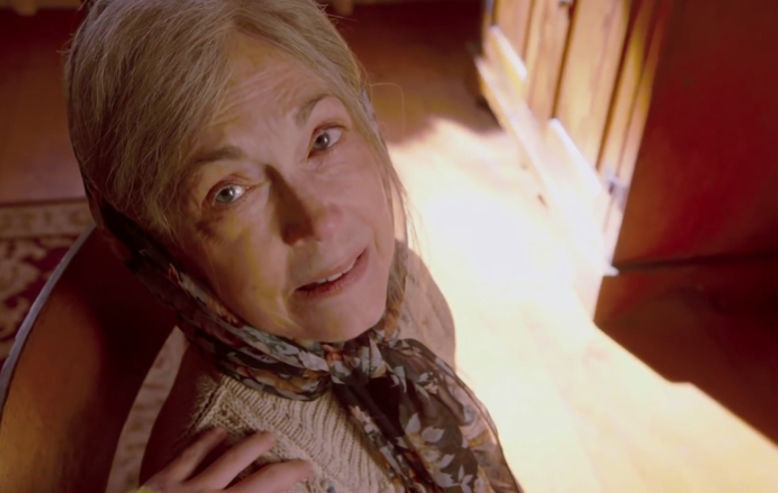Even to people who don’t pay a lot of attention to the entertainment industry, the rise and fall of M. Night Shyamalan is pretty well-known. After he broke out with the 900-lb gorilla that was The Sixth Sense in 1999, everyone anointed him the next big thing, and studios showered him with money and freedom.
But following a few more successful years — and movies — it’s been pretty much one long, steady decline. Though there were ominous signs (get it!) even before this, his decline first became truly noticeable with Lady in the Water, a fairytale that was at once silly, pretentious and chockfull of a lot of WTF. It accelerated with the embarrassment that was The Happening, a movie that Mark Wahlberg has essentially disowned.
Let me say that again: Shyamalan directed a movie that was below Mark Wahlberg’s standards as an artist.
As bad as that was, though, it only got worse with his two most recent studio movies — Last Airbender and After Earth — which not only seemed incredibly off-brand for Shyamalan, but were shockingly, laughably bad. If you’re doing the math with me at home, that’s basically a decade of bad movies. Worse, they were big budget bad movies.
Naturally, then, this post is about how his newest movie, The Visit, might be kind-of sort-of okay.
Howsawhatnow? Why make this argument?
Because while Shyamalan has definitely made several genuine clunkers, he also gets a lot of undeserved flak. Or, rather, a lot of people attack him because of his persona (pretentious, entitled and combative) and seem to project this onto his work.
To be fair, it’s hard not to do this when a writer-director, say, casts himself in his own movie as a writer who just may be able to save the world with his work. But if you truly look at his movies objectively, most of them at least have a few redeeming qualities that show you what the film could have been if he had managed to stitch together the good parts into a cohesive whole.
Since The Visit is being billed as Shyamalan returning to his horror roots, we’re completely discounting his two most recent flops (Airbender and After Earth)because, as mentioned above, they are decidedly off-brand for Shyamalan. And thank god, because I’m not really sure how to defend either of those movies. We’re also skipping over Praying with Anger and Wide Awake for pretty much the same reason. Plus, does anyone today really want to read about a Rosie O’Donnell movie? (The answer is no.)
Ready? Let’s do this.
1. The Creeping Dread of The Sixth Sense
Where — for all intents and purposes — it all began. I have a friend who rags on this movie because she swears she saw the twist coming from the beginning. My continual response: who cares? As much “oh” value as the twist brings, it is absolutely not what makes this movie great.
This is the first time we really get to see how truly gifted Shyamalan is not only at building a slow, creeping dread, but also “normalizing” the supernatural in a way that makes it truly feel like a part of the worlds he crafts. There’s a purpose to it. Rules that guide how it works without making it any less otherworldly or frightening. A lot of supposedly scary movies would still do well to learn from The Sixth Sense. Unfortunately what most (including Shyamalan) have seemed to learn is that twists are cool. Sigh.
2. The Masterful Tension of Unbreakable
A fascinating superhero movie that really tried to delve deeply into the reality of what it would mean if you suddenly woke up and discovered that you had strange powers. Was it perfect? God, no. Bruce Willis — and the movie itself — are far too brooding over his shocking discovery, never letting any joy creep into the premise. And the ending where Samuel L. Jackson’s Mr. Glass is brought to justice via a written title crawl is laughably abrupt and frustrating.
But it’s also a haunting precursor to our modern age of superhero movies, as well as the rise of the geek (as embodied nefariously by Jackson) and the idea that these kinds of stories can be taken seriously. Plus, talk about a master class in building tension. The sequence where Willis lands on a pool cover and watches it slowly sink into the water (with him on it) is terrifying. And, in perhaps the movie’s best scene, Willis’s son pulls a gun on him and wants to shoot him to prove he’s a superhero, leading to an argument with a child holding a loaded gun about how we don’t shoot friends. Holy tension, Batman!
3. The Restraint of Signs
A lot of people were really thrown by the arguably silly way that the creatures in this movie were finally able to be dispatched, but (despite the Shyamalan brand) that’s not really the point… Unless you believe the surprisingly plausible theory floating around the internet that the “aliens” in the movie are actually demons. It explains a lot of the movie’s inconsistencies and oddities in a way that actually strengthens the theme.
Forget about that for a second, though, and just think about the movie as it exists. What makes this film mostly work is Shyamalan’s absolute dedication to restraint and keeping it small and intimate. A global disaster film that could have been very Roland Emmerich-like instead largely focuses on the drama of a single family and minimizes the disaster elements. The creatures are mostly kept in the shadows and pushed to the periphery, which actually makes them loom larger as a threat because it allows our imagination to go to work. Also, it showcases his ability to mix low-key comedy with tension that simultaneously adds to and diffuses that tension — something The Visit will apparently rely on quite a bit.
4. The Off-putting Setup of The Village
What most people remember about this movie is the double twist and how yawn-worthy — and implausible — it was. Fair enough. But when the movie begins, it’s hard to deny that Shyamalan knows how to create a sense of restrained dread. Until we actually see them, the initial encounters with Those We Do Not Speak Of are actually pretty frightening. How creepy is it when Ivy reaches out to them from the porch as they drift by?
But then Shyamalan gets into the Big Idea of his movie and we’re left with something a lot sillier than it means to be. The point, however, remains — Shyamalan does the job of setting the world up and creating an off-putting tone quite nicely.
5. The (Attempted) Shunning of Hollywood Clichés in Lady in the Water
Okay, let’s get it out of the way. Yes, Shyamalan casts himself as a potentially world-changing writer, and yes, he kills off an annoying critic as a plot point. You can’t just do that and expect to get away with it unless the work is truly brilliant, and this is decidedly not.
However, there is merit in his (failed) attempt to eschew Hollywood storytelling clichés to offer a simple, positive moral about our interconnectedness, and in his continual ability to make Bryce Dallas Howard seem otherworldly whenever she appears onscreen. Also, he’s smart enough to not let his directing get in the way of Paul Giamatti, surprisingly watchable in a film that often isn’t. (Whew, that was a tough one.)
6. The Theoretically Not Terrible Premise of The Happening
Bad acting. Pacing issues. Just plain silly. There’s a lot of hate out there for this movie, even — famously — from the star himself. But those suicide scenes — how can you not find them genuinely terrifying? And while some people scoffed at the idea of trees releasing a toxin causing people to off themselves, it’s pretty scary if you actually think about it for a few seconds. Where would you go? How would you get away from it? For me, The Happening always felt like a flawed but fascinating movie that would have been fantastic as a Stephen King novel but didn’t quite work as a movie.7. The Fact That Wayward Pines Works At All
Admittedly, Wayward Pines is a bit of a weird one to include here for two reasons. Firstly, because it’s a TV show and everything else on this list is a movie. More than that, though, unlike the above movies, this isn’t Shyamalan’s baby. All of the above were both written and directed by Shyamalan, but with Wayward Pines, he merely directed the pilot and served as an executive producer. An EP who was quite involved, from all indications, but it’s not like he was the creator or showrunner.
Still, you can definitely tell that Pines is in many ways (to steal from Spike Lee) a Shyamalan “joint.” From the melodrama to the insidious creepiness to the shockingly effective twist ending, his fingerprints are all over it. Perhaps most shocking of all, though, is that just about everything about it works.
Convinced yet? Probably not. And obviously pointing out that some of his more derided films have (some) good points too doesn’t really speak to the quality of The Visit. So here’s a bonus reason why it might not suck.
While you can’t put too much stock in to these kinds of things, early reviews and word-of-mouth have mostly been positive. Moreover, in recent interviews Shyamalan has actually come across as slightly humbled and more self-aware — traits that were sorely lacking in pretty much everything he’s done for the last decade or so.
Does this mean The Visit won’t suck? Who knows? But I’m certainly rooting for it to be good, because no one wins when there’s a bad movie… except maybe Rifftrax. So I want Shyamalan to succeed. Just not enough to where he goes back to the smug guy who cast himself as a writer who’s going to change the world in his own movie. There are lines of pretension that just shouldn’t be crossed, after all.
Josh Weiss-Roessler worked in the entertainment industry in Los Angeles for almost a decade, and has written about it for even longer. His work has appeared on Tubefilter, PinkRaygun, Tor.com, and more. In his "real" job as co-owner of WR Writing, he helps all kinds of businesses create useful and relevant content that enables them to connect with people and just plain be more awesome.

